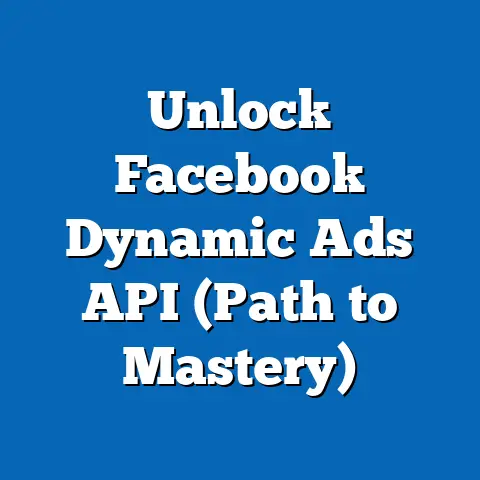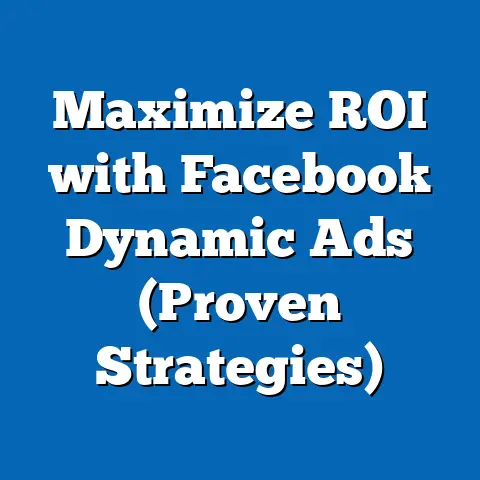Block Comments on Facebook Ads (Expert Strategies Unveiled)
Imagine your Facebook ad campaign as a well-insulated home. Just as insulation prevents heat from escaping and keeps your energy bills down, strategically managing comments on your Facebook ads can prevent negative feedback from draining your campaign’s effectiveness and damaging your brand reputation. We all know the digital world can be a wild place, and the comments section of your Facebook ads is no exception. It can be a vibrant hub of positive engagement, but it can also quickly turn into a breeding ground for negativity, misinformation, and even outright attacks.
I’ve seen firsthand how a single negative comment, left unchecked, can snowball into a PR nightmare, tanking an otherwise successful ad campaign. In my early days of managing social media campaigns, I launched an ad for a new organic skincare line. The ad was beautifully designed, targeted perfectly, and initially garnered a lot of positive attention. However, a single comment questioning the authenticity of the “organic” ingredients sparked a debate, attracting more and more negative attention. Instead of focusing on the product’s benefits, potential customers were now caught up in a whirlwind of skepticism and doubt. I learned a valuable lesson that day: proactively managing comments is just as important as crafting compelling ad copy and targeting the right audience.
The truth is, comments – both positive and negative – wield significant power. They can sway potential customers, influence brand perception, and ultimately, impact your bottom line. This is why understanding how to effectively manage comments on your Facebook ads is crucial for any business looking to thrive in the digital landscape.
Objective: To provide expert strategies for blocking comments on Facebook ads, ensuring a more controlled and positive advertising environment.
Section 1: Understanding the Impact of Comments on Facebook Ads
Comments on Facebook ads are a double-edged sword. On one hand, they can be a fantastic source of engagement, providing valuable feedback, sparking conversations, and even driving sales. On the other hand, they can quickly become a source of negativity, spreading misinformation, damaging your brand reputation, and ultimately, undermining your advertising efforts.
Let’s break down the impact of these comments:
- Positive Engagement: When users leave positive comments, it acts as social proof, validating your product or service and encouraging others to take notice. These comments can boost ad performance, increase click-through rates, and drive conversions.
- Negative Feedback: Negative comments, on the other hand, can have the opposite effect. They can deter potential customers, damage your brand image, and even lead to a PR crisis if left unaddressed.
The Power of User Comments: Statistics and Real-World Examples
Statistics paint a compelling picture of the influence of comments:
- 88% of consumers trust online reviews as much as personal recommendations. (BrightLocal) This highlights the importance of positive comments and the potential damage of negative ones.
- Ads with positive social context (likes, shares, comments) have higher click-through rates. (HubSpot) This demonstrates the direct impact of positive engagement on ad performance.
- A single negative review can deter up to 22% of potential customers. (Harvard Business Review) This emphasizes the significant financial impact of negative feedback.
Case Studies: When Comments Go Wrong
I’ve seen countless examples where a single negative comment spiraled out of control, causing significant damage to a brand’s reputation.
- Example 1: The Fast Fashion Faux Pas: A fast-fashion brand launched an ad featuring a model wearing a dress made from what appeared to be unsustainable materials. A comment calling out the brand for “greenwashing” quickly gained traction, leading to a barrage of negative comments and ultimately, a boycott of the brand.
- Example 2: The Airline Disaster: An airline ran an ad promoting a “stress-free” travel experience. Unfortunately, the ad was launched shortly after a series of flight delays and cancellations. The comments section quickly filled with complaints from disgruntled passengers, turning the ad into a platform for airing grievances.
These examples underscore the importance of proactive comment management. It’s not enough to simply launch an ad and hope for the best. You need to be prepared to address negative comments quickly and effectively, or risk damaging your brand reputation and undermining your advertising efforts.
The Psychology of Social Proof: How Comments Influence Consumer Behavior
The power of comments lies in the psychology of social proof. As humans, we’re naturally inclined to look to others for validation and guidance, especially when making purchasing decisions.
- Bandwagon Effect: When we see others engaging positively with a product or service, we’re more likely to believe it’s worth our attention and money.
- Fear of Missing Out (FOMO): Positive comments can create a sense of FOMO, prompting us to take action and avoid missing out on a popular trend or opportunity.
- Trust and Credibility: Positive comments build trust and credibility, making us more likely to believe the claims made in the ad and less likely to be swayed by skepticism or doubt.
Comment Moderation: Your Shield Against Negativity
Given the profound impact of comments, comment moderation is no longer optional—it’s a necessity. Comment moderation involves actively monitoring and managing the comments on your Facebook ads to ensure a positive and productive environment. This can include:
- Deleting offensive or inappropriate comments.
- Responding to negative comments in a professional and constructive manner.
- Hiding comments that are irrelevant or misleading.
- Blocking users who repeatedly violate your community guidelines.
By implementing a robust comment moderation strategy, you can protect your brand reputation, foster positive engagement, and ultimately, improve the performance of your Facebook ad campaigns.
Key Takeaway: Comments on Facebook ads have a significant impact on brand perception and ad performance. Proactive comment moderation is crucial for maintaining a positive advertising environment and protecting your brand reputation.
Next Steps: Start by identifying the potential risks associated with comments on your Facebook ads. Consider the types of negative feedback you’re likely to receive and develop a plan for addressing them effectively.
Section 2: The Mechanics of Comment Blocking on Facebook Ads
Now that we understand the importance of comment moderation, let’s dive into the technical aspects of blocking comments on Facebook ads. While complete comment disabling isn’t always directly offered by Facebook, I’ll guide you through strategies to achieve a similar outcome by limiting or moderating comments effectively.
Accessing Facebook Ads Manager: Your Control Center
The first step is to access your Facebook Ads Manager. This is your central hub for managing all your advertising campaigns on Facebook and Instagram.
- Log into your Facebook account: Make sure you’re logged into the Facebook account associated with your business page.
- Navigate to Ads Manager: You can access Ads Manager by clicking the dropdown arrow in the top right corner of your Facebook page and selecting “Manage Ads.” Alternatively, you can go directly to
facebook.com/adsmanager. - Select your Ad Account: If you have multiple ad accounts, make sure you select the correct one from the dropdown menu.
Navigating to Comment Settings: The Indirect Route
Unfortunately, Facebook doesn’t offer a direct “disable comments” button for ads. However, there are several indirect methods you can use to control the comments on your ads:
- Creative Choice: Using Dark Posts: Opting to create your ad as a “dark post” (an unpublished post) allows you to run ads without them appearing on your Facebook Page’s timeline. Since it is not a public post, it inherently has fewer opportunities for public comments compared to boosting an existing page post.
- Moderate Existing Comments: While you can’t prevent comments entirely, you can actively moderate them.
- Use Facebook’s Comment Moderation Tools: Facebook offers a range of tools to help you manage comments, including:
- Keyword Blocking: Create a list of keywords that you want to automatically hide or delete from comments. This is useful for filtering out profanity, spam, or other unwanted content.
- Profanity Filter: Enable Facebook’s profanity filter to automatically hide comments containing offensive language.
- Comment Ranking: Adjust your comment ranking settings to prioritize the most relevant and engaging comments, pushing less desirable comments to the bottom.
- Hiding Comments: Manually hide comments that you deem inappropriate or irrelevant. Hidden comments are only visible to the person who posted them and their friends.
- Deleting Comments: Manually delete comments that violate your community guidelines or are otherwise harmful. Deleted comments are permanently removed from your ad.
- Banning Users: Ban users who repeatedly violate your community guidelines or engage in abusive behavior. Banned users will no longer be able to comment on your ads or page.
- Keyword Blocking: Create a list of keywords that you want to automatically hide or delete from comments. This is useful for filtering out profanity, spam, or other unwanted content.
- Profanity Filter: Enable Facebook’s profanity filter to automatically hide comments containing offensive language.
- Comment Ranking: Adjust your comment ranking settings to prioritize the most relevant and engaging comments, pushing less desirable comments to the bottom.
- Hiding Comments: Manually hide comments that you deem inappropriate or irrelevant. Hidden comments are only visible to the person who posted them and their friends.
- Deleting Comments: Manually delete comments that violate your community guidelines or are otherwise harmful. Deleted comments are permanently removed from your ad.
- Banning Users: Ban users who repeatedly violate your community guidelines or engage in abusive behavior. Banned users will no longer be able to comment on your ads or page.
Blocking vs. Hiding: Understanding the Difference
It’s important to understand the difference between blocking and hiding comments:
- Hiding Comments: When you hide a comment, it’s only visible to the person who posted it and their friends. This is a good option for comments that are irrelevant or slightly negative, but not necessarily offensive.
- Deleting Comments: When you delete a comment, it’s permanently removed from your ad. This is the best option for comments that are offensive, spammy, or violate your community guidelines.
- Banning Users: When you ban a user, they are no longer able to comment on your ads or page. This is the best option for users who repeatedly violate your community guidelines or engage in abusive behavior.
Limitations of Comment Blocking: When It’s Not Feasible
While comment moderation is a valuable tool, it’s not always feasible or advisable to block all comments. In some cases, allowing comments can be beneficial for:
- Building Community: Comments can foster a sense of community around your brand, allowing customers to connect with each other and share their experiences.
- Gathering Feedback: Comments can provide valuable feedback on your products, services, and advertising campaigns.
- Addressing Concerns: Comments can give you the opportunity to address customer concerns and resolve issues in a public forum, demonstrating your commitment to customer satisfaction.
Key Takeaway: While Facebook doesn’t offer a direct “disable comments” feature, you can effectively manage comments on your ads through a combination of creative choices (dark posts), comment moderation tools, and strategic decision-making.
Next Steps: Familiarize yourself with Facebook’s comment moderation tools and experiment with different settings to find what works best for your business.
Section 3: Expert Strategies for Effectively Blocking Comments
Now that you understand the mechanics of comment moderation, let’s explore some expert strategies for effectively blocking or managing comments on your Facebook ads. These strategies can be broadly categorized into three areas:
- Preemptive Strategies: Taking steps to prevent negative comments from appearing in the first place.
- Reactive Strategies: Responding quickly and effectively to negative comments that do appear.
- Community Management Strategies: Building a positive community around your brand to reduce negativity and foster engagement.
Preemptive Strategies: Preventing Negativity Before It Starts
The best way to deal with negative comments is to prevent them from appearing in the first place. Here are some preemptive strategies you can use:
- Crafting Ad Copy and Visuals That Deter Negative Comments: Pay close attention to the language and imagery you use in your ads.
- Avoid Controversial Topics: Steer clear of topics that are likely to spark debate or controversy.
- Use Inclusive Language: Use language that is inclusive and respectful of all audiences.
- Be Transparent and Authentic: Be honest and transparent about your products and services.
- Use High-Quality Visuals: Use high-quality visuals that accurately represent your brand and products.
- Using Targeted Audience Settings to Reach Users More Likely to Engage Positively: Target your ads to audiences who are more likely to be interested in your products or services and less likely to leave negative comments.
- Target Based on Interests and Behaviors: Use Facebook’s targeting options to reach users who have demonstrated an interest in your industry or products.
- Exclude Certain Demographics: Exclude demographics that are more likely to leave negative comments.
- Use Lookalike Audiences: Create lookalike audiences based on your existing customers, who are more likely to be engaged and positive.
- Avoid Controversial Topics: Steer clear of topics that are likely to spark debate or controversy.
- Use Inclusive Language: Use language that is inclusive and respectful of all audiences.
- Be Transparent and Authentic: Be honest and transparent about your products and services.
- Use High-Quality Visuals: Use high-quality visuals that accurately represent your brand and products.
- Target Based on Interests and Behaviors: Use Facebook’s targeting options to reach users who have demonstrated an interest in your industry or products.
- Exclude Certain Demographics: Exclude demographics that are more likely to leave negative comments.
- Use Lookalike Audiences: Create lookalike audiences based on your existing customers, who are more likely to be engaged and positive.
Reactive Strategies: Responding Quickly and Effectively
Despite your best efforts, negative comments will inevitably appear on your ads. Here’s how to respond quickly and effectively:
- Setting Up Notifications for Comments and Responding Promptly: Enable Facebook notifications so you’re alerted whenever someone comments on your ad. Respond to negative comments as quickly as possible, ideally within a few hours.
- Employing Comment Moderation Tools for Automated Blocking: Use Facebook’s comment moderation tools to automatically hide or delete comments that contain specific keywords or phrases.
- Create a Keyword Blacklist: Compile a list of keywords that are commonly used in negative or offensive comments.
- Enable the Profanity Filter: Enable Facebook’s profanity filter to automatically hide comments containing offensive language.
- Create a Keyword Blacklist: Compile a list of keywords that are commonly used in negative or offensive comments.
- Enable the Profanity Filter: Enable Facebook’s profanity filter to automatically hide comments containing offensive language.
Community Management Strategies: Building a Positive Environment
Building a positive community around your brand is a long-term strategy that can significantly reduce negativity and foster engagement on your Facebook ads.
- Building a Positive Community Around the Brand to Reduce Negative Comments: Create a space where customers feel valued, respected, and connected to your brand.
- Encourage Positive Interactions: Encourage customers to share their positive experiences with your products or services.
- Respond to Comments and Messages: Respond to comments and messages promptly and professionally.
- Run Contests and Giveaways: Run contests and giveaways to incentivize engagement and build excitement around your brand.
- Engaging with Followers in Organic Posts to Foster Loyalty and Reduce Negativity on Ads: Engage with your followers in organic posts to build relationships and foster loyalty.
- Share Valuable Content: Share content that is informative, entertaining, and relevant to your audience.
- Ask Questions and Encourage Discussion: Ask questions and encourage your followers to share their thoughts and opinions.
- Respond to Comments and Messages: Respond to comments and messages promptly and professionally.
- Encourage Positive Interactions: Encourage customers to share their positive experiences with your products or services.
- Respond to Comments and Messages: Respond to comments and messages promptly and professionally.
- Run Contests and Giveaways: Run contests and giveaways to incentivize engagement and build excitement around your brand.
- Share Valuable Content: Share content that is informative, entertaining, and relevant to your audience.
- Ask Questions and Encourage Discussion: Ask questions and encourage your followers to share their thoughts and opinions.
- Respond to Comments and Messages: Respond to comments and messages promptly and professionally.
Key Takeaway: Effectively managing comments on Facebook ads requires a combination of preemptive, reactive, and community management strategies. By taking a proactive approach, you can minimize negativity, foster engagement, and build a positive online community around your brand.
Next Steps: Review your current comment moderation strategy and identify areas for improvement. Consider implementing some of the expert strategies outlined above to create a more positive and productive advertising environment.
Section 4: Analyzing the Outcomes of Blocking Comments
Implementing a comment blocking or moderation strategy is just the first step. To ensure its effectiveness, you need to analyze the outcomes and make adjustments as needed. This section will guide you through the process of measuring the effectiveness of your comment blocking strategies, tracking key performance indicators (KPIs), and using data to continuously improve your approach.
Measuring the Effectiveness of Comment Blocking Strategies
How do you know if your comment blocking strategy is working? Here are some key metrics to track:
- Engagement Rates: Monitor your engagement rates (likes, shares, comments) before and after implementing your comment blocking strategy. Are you seeing an increase in positive engagement? Are you seeing a decrease in negative engagement?
- Conversion Rates: Track your conversion rates (sales, leads, sign-ups) before and after implementing your comment blocking strategy. Are you seeing an increase in conversions?
- Brand Sentiment Analysis: Use social listening tools to track mentions of your brand online and analyze the sentiment associated with those mentions. Are people talking about your brand more positively?
- Customer Satisfaction Scores: If you collect customer satisfaction scores, track them over time to see if your comment blocking strategy is having a positive impact on customer satisfaction.
Key Performance Indicators (KPIs) to Track
Here are some specific KPIs to track related to comment moderation:
- Number of Comments Blocked/Hidden/Deleted: This metric gives you a sense of the volume of negative or inappropriate comments you’re dealing with.
- Time to Respond to Comments: This metric measures how quickly you’re responding to comments, both positive and negative.
- Percentage of Positive vs. Negative Comments: This metric gives you a sense of the overall sentiment surrounding your brand and products.
- Cost Per Acquisition (CPA): Track your CPA before and after implementing your comment blocking strategy to see if it’s having a positive impact on your advertising costs.
Case Studies: Success Stories and Lessons Learned
Let’s look at some case studies of brands that have successfully implemented comment blocking strategies:
- Case Study 1: The E-commerce Brand: An e-commerce brand selling sustainable clothing implemented a comment moderation strategy that focused on blocking comments containing misinformation about their products or the environment. They saw a significant increase in positive engagement and a decrease in negative sentiment surrounding their brand.
- Case Study 2: The Local Restaurant: A local restaurant implemented a comment moderation strategy that focused on responding quickly and professionally to negative reviews. They were able to turn several negative reviews into positive experiences by addressing customer concerns and offering solutions.
Continuous Improvement: Adjusting Strategies Based on Data
The key to success with comment blocking is continuous improvement. Don’t just set it and forget it. Regularly analyze your data and make adjustments to your strategies as needed.
- Experiment with Different Settings: Experiment with different keyword blacklists, profanity filter settings, and comment ranking options to find what works best for your business.
- Monitor Your Results: Monitor your engagement rates, conversion rates, and brand sentiment to see if your changes are having a positive impact.
- Adapt to Changing Trends: Stay up-to-date on the latest trends in social media and adjust your strategies accordingly.
Key Takeaway: Analyzing the outcomes of your comment blocking strategies is crucial for ensuring their effectiveness. By tracking key metrics, monitoring your results, and continuously improving your approach, you can create a more positive and productive advertising environment.
Next Steps: Start tracking the KPIs outlined above and analyze your data to identify areas for improvement. Consider experimenting with different comment moderation settings to see what works best for your business.
Section 5: Advanced Tactics for Managing Comments Beyond Blocking
While blocking comments is a valuable tool, it’s not the only way to manage comments on your Facebook ads. This section explores advanced tactics that go beyond simply blocking comments, focusing on proactive strategies, customer engagement, and leveraging user-generated content.
Creating a FAQ Section to Address Common Concerns in Advance
One of the best ways to prevent negative comments is to address common concerns before they even arise. Create a comprehensive FAQ section on your website or Facebook page that answers frequently asked questions about your products, services, and policies.
- Identify Common Questions: Monitor your comments and messages to identify the questions that are asked most frequently.
- Provide Clear and Concise Answers: Write clear and concise answers to these questions, using language that is easy to understand.
- Promote Your FAQ Section: Promote your FAQ section on your website, Facebook page, and in your ads.
Using Chatbots for Immediate Responses to Customer Inquiries or Complaints
Chatbots can provide immediate responses to customer inquiries or complaints, even when you’re not available to answer them yourself. This can help prevent negative comments from escalating and provide customers with the information they need quickly and efficiently.
- Choose a Chatbot Platform: Choose a chatbot platform that integrates with Facebook Messenger.
- Design Your Chatbot’s Flow: Design your chatbot’s flow to answer common questions and address potential concerns.
- Train Your Chatbot: Train your chatbot to understand and respond to a variety of customer inquiries.
- Monitor Your Chatbot’s Performance: Monitor your chatbot’s performance and make adjustments as needed.
Leveraging User-Generated Content to Shift Focus to Positive Interactions
User-generated content (UGC) is any content created by your customers, such as photos, videos, reviews, and testimonials. Leveraging UGC can help shift the focus away from negative comments and towards positive interactions.
- Encourage Customers to Share Their Content: Encourage customers to share their content by running contests, offering incentives, or simply asking them to tag your brand in their posts.
- Feature UGC in Your Ads: Feature UGC in your ads to showcase your products and services in a positive light.
- Create a UGC Gallery: Create a UGC gallery on your website or Facebook page to showcase the best content created by your customers.
Transparency and Authenticity: The Cornerstones of Commenting Strategies
In today’s digital landscape, transparency and authenticity are more important than ever. Customers are savvy and can easily spot inauthentic or manipulative tactics.
- Be Honest and Transparent: Be honest and transparent about your products, services, and policies.
- Respond Authentically: Respond to comments and messages in an authentic and personal way.
- Admit Mistakes: If you make a mistake, admit it and take steps to correct it.
Turning Negative Comments into Opportunities for Engagement and Improvement
Believe it or not, negative comments can actually be a valuable opportunity for engagement and improvement.
- Respond Professionally: Respond to negative comments professionally and respectfully.
- Address Concerns: Address the customer’s concerns and offer a solution.
- Ask for Feedback: Ask for feedback on how you can improve your products or services.
- Learn from Your Mistakes: Use negative comments as an opportunity to learn from your mistakes and improve your business.
Key Takeaway: Managing comments on Facebook ads goes beyond simply blocking negative feedback. By proactively addressing concerns, engaging with customers, and leveraging user-generated content, you can create a positive and productive advertising environment.
Next Steps: Evaluate your current comment management strategy and identify opportunities to incorporate some of the advanced tactics outlined above. Consider creating an FAQ section, implementing a chatbot, or leveraging user-generated content to improve your customer engagement and brand perception.
Conclusion
Throughout this guide, we’ve explored the multifaceted world of managing comments on Facebook ads. From understanding the impact of comments on brand perception and ad performance to mastering the technical aspects of comment moderation and implementing expert strategies, you’re now equipped with the knowledge and tools to navigate this often-turbulent landscape.
Remember, the goal isn’t just to silence negative voices; it’s to cultivate a positive and productive advertising environment that fosters engagement, builds community, and ultimately, drives results. Just as we insulate our homes to prevent energy loss, businesses must proactively manage comments to prevent negative feedback from draining their campaign’s effectiveness.
By implementing the strategies discussed in this article, you can achieve a more “energy-efficient” ad campaign that maximizes positive engagement, strengthens your brand reputation, and boosts your bottom line.
Call to Action:
Take action today to implement the strategies discussed in this guide. Start by reviewing your current comment moderation practices and identifying areas for improvement. Experiment with different settings, track your results, and continuously adapt your approach to achieve the best possible outcomes.
Stay Informed:
Facebook’s advertising policies and tools are constantly evolving. Stay informed about future updates and best practices by following industry blogs, attending webinars, and engaging with other marketers in online communities.
Share Your Experiences:
We encourage you to share your experiences and strategies for managing comments on Facebook ads in the comments section below or on social media platforms. By sharing your insights, you can help other marketers create a more positive and productive advertising environment for their brands.
Remember, managing comments on Facebook ads is an ongoing process. By staying proactive, engaged, and adaptable, you can create a thriving online community that supports your business goals and strengthens your brand.






